The TCL C6K is a television for those who want to combine gaming and watching films with good contrast, while not spending a fortune. Thanks to the VA panel with Mini-LED backlighting, blacks are deep, and the contrast is high, making evening screenings truly impressive. Additionally, there is decent brightness, which combined with Dolby Vision allows films to take on a cinematic quality. The smoothness of the picture is also noteworthy – the 144Hz refresh rate works wonders for sports or dynamic games, and gamers receive a full package of extras: VRR, ALLM, HDMI 2.1, HGiG, and even a 240Hz mode on PC. On a daily basis, the television runs on Google TV, which offers a plethora of applications and the Gemini AI voice assistant, making it convenient and flexible to use. It’s also worth mentioning the sound – support for Dolby Atmos and DTS gives the impression that the device is ready not only for gaming. As is often the case, there are a few things that could be improved. The backlighting can lose details or illuminate blacks in challenging scenes, and Polish translations in the menu are sometimes so awkward that one has to ponder what they actually mean. Despite this, the overall performance stands out very well, and considering the price, the TCL C6K could be one of the more interesting choices for anyone looking for a versatile television for films, sports, and gaming. Especially when a good promotion comes along – and when TCL traditionally polishes the small details in updates.
- Matching (Score)
- Our verdict
- TV appearance
- Where to buy
- Contrast and black detail
- HDR effect quality
- Factory color reproduction
- Color reproduction after calibration
- Smoothness of tonal transitions
- Image scaling and smoothness of tonal transitions
- Blur and motion smoothness
- Console compatibility and gaming features
- Input lag
- Compatibility with PC
- Viewing angles
- TV efficiency during daytime
- Details about the matrix
- TV features
- Apps
- Playing files from USB
- Sound
TCL C6K vs Philips OLED770
Direct compare
C6K / C69K / Q6C
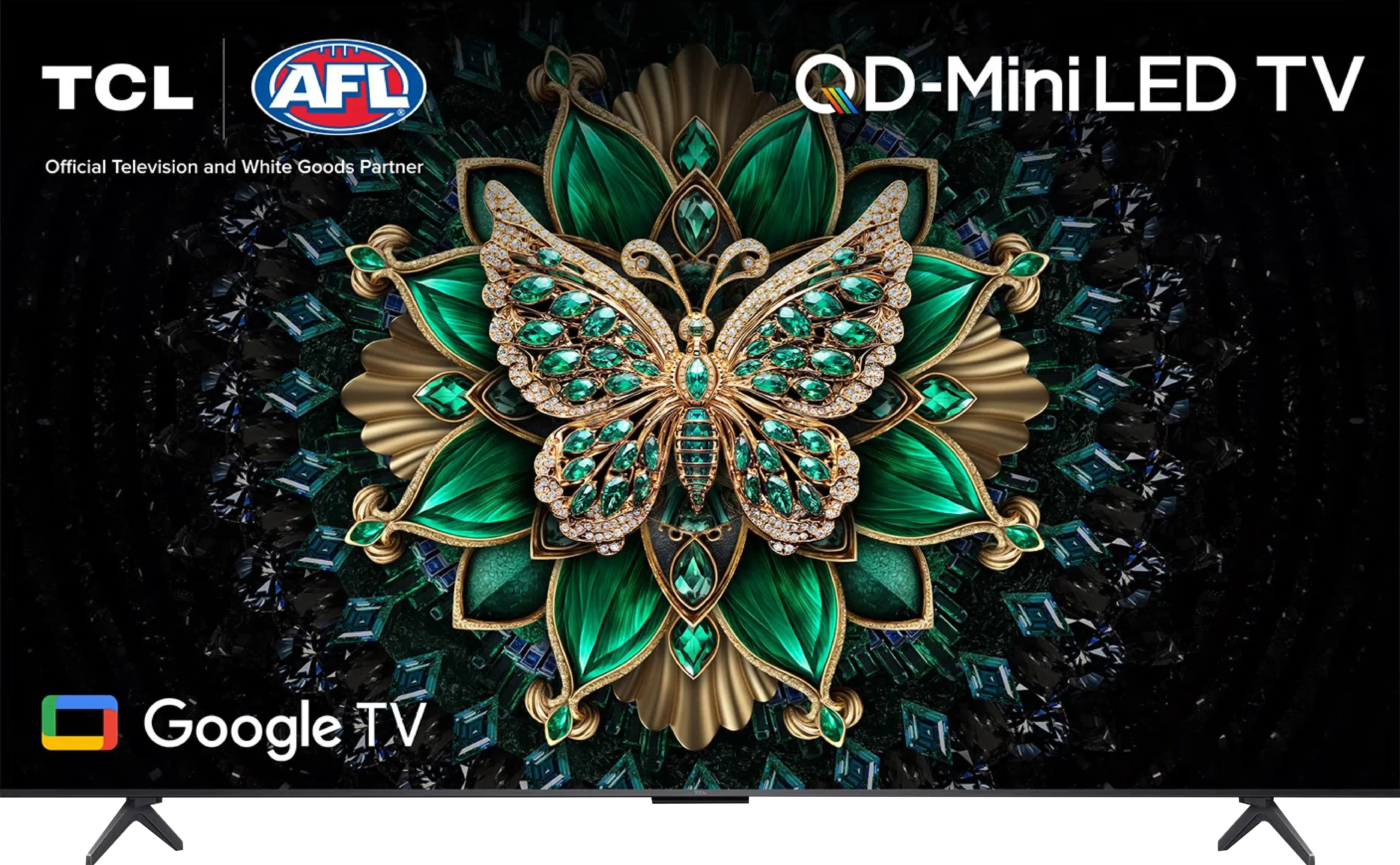

Panel type: LCD VA
Resolution: 3840x2160
System: Google TV
Model year: 2025
Complete the survey to find out the result

Panel type: WRGB OLED
Resolution: 3840x2160
System: Titan OS
Model year: 2025
Complete the survey to find out the result

Overall rating
7.1
7.5
Movies and series in UHD quality
6.7
8.0
Classic TV, YouTube
6.6
8.6
Sports broadcasts (TV and apps)
6.3
8.4
Gaming on console
8.4
9.2
TV as a computer monitor
8.6
7.6
Watching in bright light
6.4
4.8
Utility functions
7.0
5.5
Apps
9.6
6.7
Sound quality
6.5
7.0
Complete the survey to find out what fits your preferences
Advantages
Very good contrast and black: VA panel and MINI-LED backlighting
Good motion smoothness: High refresh rate of 144Hz
Not bad brightness of the panel
Many features for gamers: VRR, ALLM, HDMI 2.1, HGiG
Additional mode for PC gamers: 240Hz
Google TV system with a wide selection of applications
Support for multiple HDR formats including Dolby Vision
Support for Dolby Atmos and DTS
Very attractive price
Excellent picture quality typical of OLED – perfect black, infinite contrast
AmblightTV system
Support for multiple HDR formats including Dolby Vision and HDR10+
Great picture quality after calibration
Decent viewing angles
Excellent motion smoothness – 120Hz OLED panel!
Many features for gamers: VRR, ALLM, Dolby Vision Gaming
Low input lag
4 HDMI 2.1 ports!
Disadvantages
Managing the backlighting could be better
Language errors in the system
TitanOS has very few applications and has annoying bugs
The remote control works on infrared
Not the best upscaling quality
Average reflection suppression – the screen behaves like a slightly dimmed mirror
Our verdict
Philips OLED770 is a television that stands out primarily due to the quality of its picture – the characteristic perfect black and infinite contrast typical of OLEDs make even the most ordinary evening of watching a series feel like a small cinematic experience. After calibration, the colours gain naturalness and coherence, and details in dark scenes are separated from the lights with surgical precision. It is a screen that gives the impression of engaging with premium-class technology, even though formally it is a budget OLED in Philips' portfolio. The second pillar on which the OLED770 stands very firmly is gaming. Here, the manufacturer has really done their homework. VRR works up to 120 Hz, and we have an automatic game mode (ALLM), while input lag in standard HDR10 or SDR modes at 120 Hz can drop to 5 ms – results that will easily satisfy even the most demanding gamers. And finally, the Ambilight system – for many, it is just a gadget, but during longer sessions, it really makes a difference. The colourful LEDs behind the screen dynamically respond to what is happening in the game and can immerse you even further into the virtual world. This is precisely why one could risk stating that the OLED770 is one of the more interesting budget gaming televisions on the market.
However, not everything shines so brightly when it comes to Smart TV... TitanOS is the biggest drawback of this model. Theoretically, it has everything needed: access to applications, AirPlay support, and voice commands. In practice, however, the app list is limited, screen mirroring often does not work at all, and voice search does not support the Polish language. Additionally, the remote control, although well-designed and backlit – works via infrared, which sounds downright anachronistic in 2025. The system is supposedly fast, but it can be irritating due to errors, and instead of encouraging usage, at times it rather encourages us to turn it off. And here we come to the crux: the OLED770 is a television that works great as a screen for films and games, but not necessarily as a multimedia centre for the home. For someone who primarily uses a console, home cinema, or operator's decoder – this will be a well-chosen option. We get a fantastic picture, a full set of modern gaming functions, and of course, the proprietary AmbilightTV lighting system! But if someone is looking for a television that is meant to replace everything and be a multimedia powerhouse, it is better to look towards more expensive Philips models that offer more refined system solutions like GoogleTV.
TV appearance
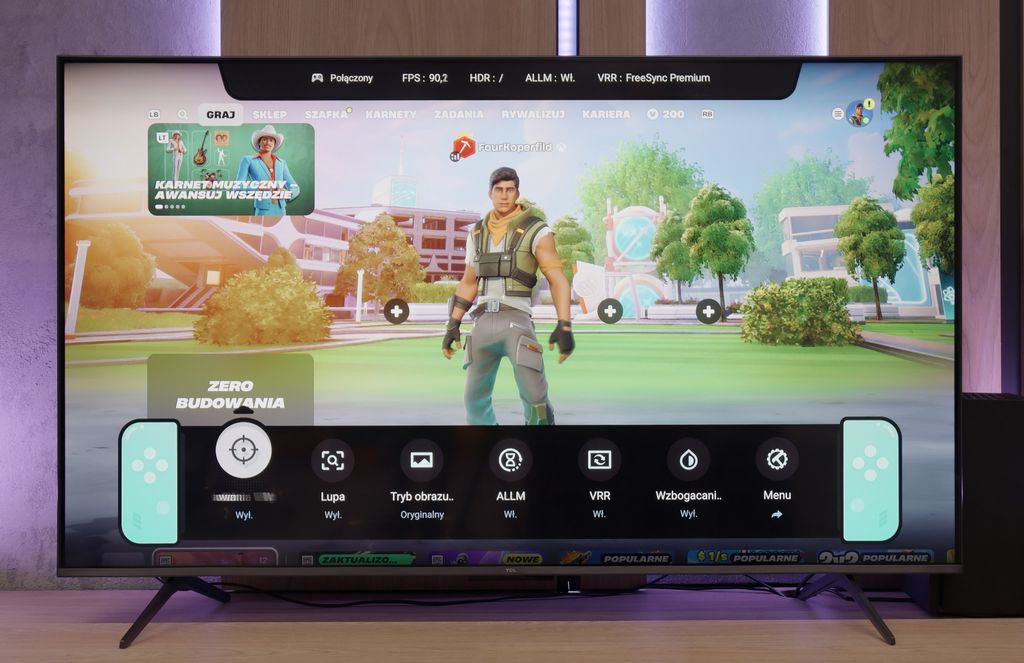
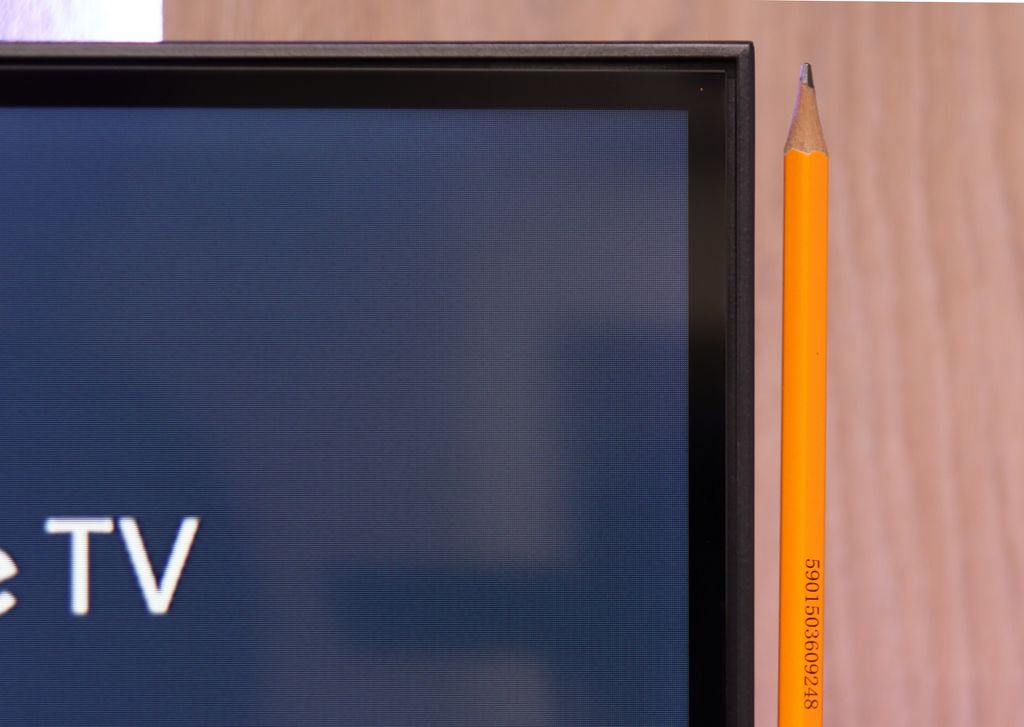
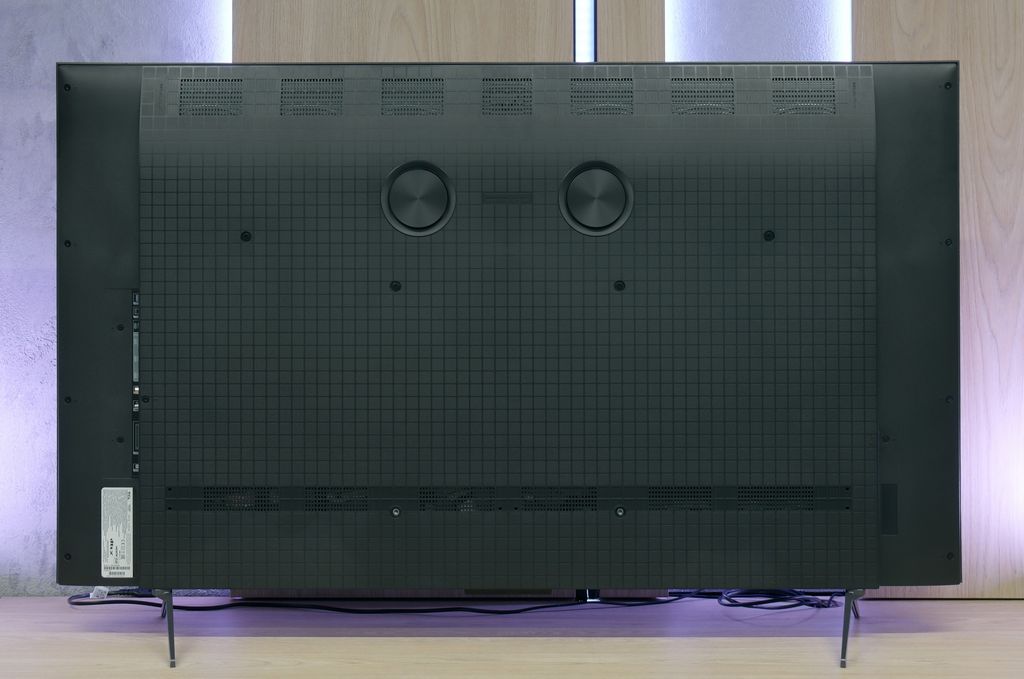
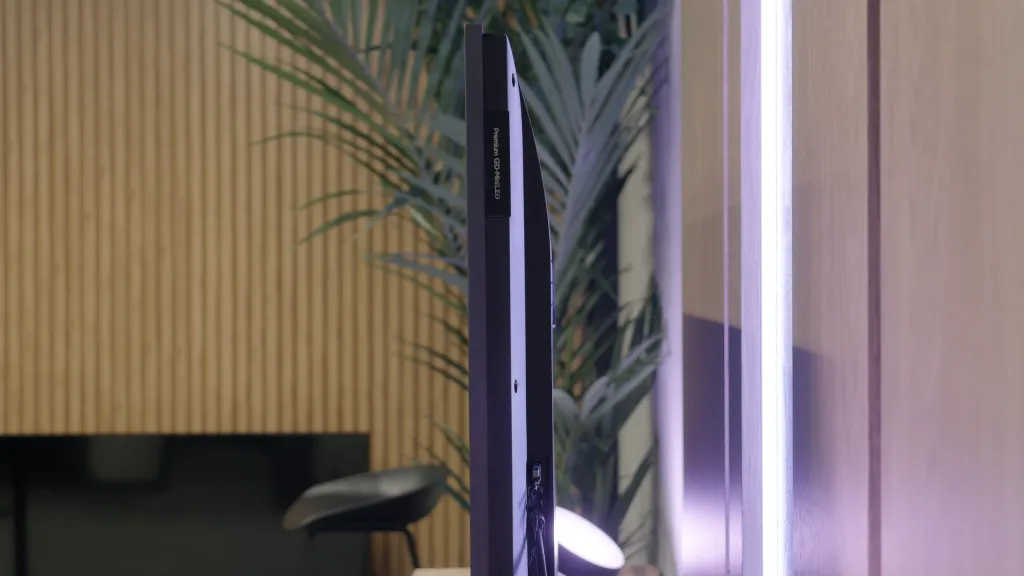




Contrast and black detail
7.3/10
10/10
Local dimming function: Yes, number of zones: 180 (10 x 18)
Contrast:

Result
114,000:1

Result
17,300:1

Result
16,200:1

Result
9,900:1

Result
4,850:1

Result
∞:1

Result
∞:1

Result
∞:1

Result
∞:1

Result
∞:1
Halo effect and black detail visibility:


The TCL C6K is based on a VA panel, more specifically an HVA manufactured by TCL CSOT, which in itself provides solid native contrast at a level of 6000–7000:1 without the use of local dimming. However, the real strength of this model lies in the Mini-LED backlighting that allows for the dimming of individual zones. In the tested 55-inch version, we counted around 180 of these zones, and with an increase in diagonal size, this number naturally grows. For a television in this price segment, the contrast is truly impressive. In simpler film scenes, such as segments from "Oblivion," it performs excellently, and shots completely bathed in black make a great impression. Of course, due to the nature of Mini-LED technology, it is not always possible to avoid issues – in more challenging frames with many bright details, halo effects may appear or some elements may be dimmed too much (regardless of local dimming settings). Nevertheless, contrast can be considered a strong point of the C6K.
In terms of black levels and contrast, the Philips OLED770 does not introduce any revolution – but with OLEDs, it would be difficult to expect one. The organic matrix allows for the complete dimming of individual pixels, which in practice gives us almost perfect black and contrast that reaches infinity. Whether we are watching night scenes in films or scenes full of small bright points, the television precisely separates details from the background. There are no halo effects or other artifacts typical of LCD televisions with local dimming. Choosing an OLED – including the 770 model – provides assurance that in this category, the picture will look stunning.
HDR effect quality
4.9/10
6/10
Luminance measurements in HDR:

Result
612 nit

Result
202 nit

Result
424 nit

Result
144 nit

Result
587 nit

Result
546 nit

Result
657 nit

Result
726 nit

Result
704 nit

Result
275 nit
Scene from the movie “Pan” (about 2800 nits)


Scene from the movie “Billy Lynn” (about 1100 nits)


Static HDR10


Dynamic: Dolby Vision
Dynamic: Dolby Vision


HDR luminance chart:
Philips OLED770
HDR luminance
Luminance of RGB colors
TCL C6K
HDR luminance
TCL C6K is a moderately bright television that can showcase its full potential under the best cinematic conditions – the maximum brightness is around 600 nits. In scenes with large, intense light sources, the HDR effect can be truly satisfying, providing a sense of cinematic sparkle. However, it is important to remember that when managing backlight zones, there are occasions where some elements are dimmed, and at times become barely visible. It is clear that there is a lack of proper algorithm optimisation here, although looking at the technical parameters in this price range, the overall construction performs exceedingly well.
The Philips OLED770 does not attempt to compete with the brightest OLEDs on the market, and it would be difficult to expect that, as it is the entry-level model in Philips' range for 2025. In our measurements, it reached a maximum of around 700 nits, which allows enjoyment of HDR effects in scenes where light appears sporadically – for example, in the flash of headlights or a starry sky. In such moments, the image can truly be stunning. However, it is different when there are more bright elements on the screen. The television, like many cheaper OLEDs, limits luminance in those situations, causing the entire image to noticeably dim. This was best observed in a scene from the film The Meg, where the sun comes out behind an oil rig – the brightness then dropped to around 250 nits, which is almost three times less. The HDR effect remains pleasant to the eye, but it is worth being aware that this model performs best in scenes with less intense light. Fortunately, the OLED770 has a trump card – the coverage of the DCI-P3 colour gamut is as high as 99%, so colours in films and games are vivid and very close to what the creator intended to convey.
Factory color reproduction
5/10
6.2/10


Factory Mode
After calibration


Factory Mode
After calibration
In this year's TCL televisions, the Filmmaker mode has appeared, and it must be admitted that it is definitely the best choice straight out of the box. This is the mode we recommend for daily watching of films and series. Unfortunately, as is often the case, the best does not mean perfect. In the case of SDR content, the image was too warm, as the red was quite pronounced in the white balance. Conversely, with HDR content, we had the opposite impression – the image became cooler than it should have been due to an excess of blue. Additionally, the brightness characteristics sometimes led to overexposure. In practice, this resulted in quite noticeable errors in colour tests, which are difficult to accept in a mode advertised as "from the creators."
The first measurements already show that the factory settings of the Philips OLED770 have quite a lot to improve even in Filmmaker mode. The white balance chart clearly shows a lack of blue, resulting in a slightly yellowish tint to the image. In practice, the white is not snowy but leans towards warmer tones – which some may even appreciate, but from the perspective of accuracy, this is a deviation from the norm. The gamma, on the other hand, tends to the darker side – the average value is around 2.6 instead of the reference 2.4. In the midtones, the image appears subdued and more saturated, which may seem too "filmic," but detracts somewhat from naturalness. However, the most issues are evident in colour reproduction. The average error is relatively high, and some colours – particularly shades of grey – deviate significantly from what one should see. In everyday viewing, this means that sometimes colours may look less natural than we would like.
Color reproduction after calibration
7.5/10
9/10




Thanks to the white balance adjustment, it was possible to significantly reduce the C6K's tendency to distort colours, which translated into a very good final result. After calibration, we will no longer observe the effect of excessive warmth in SDR scenes or overly cooling the image in HDR. However, it is worth taking a closer look at the brightness characteristics. In SDR content, it is difficult to have major objections – the image looks really good, especially in older films, television programmes, or materials from YouTube. It fares much worse in the case of HDR content. An analysis of the EOTF curve suggests that everything is fine, but in practice (EOTF in films), the limitations of the design become apparent. The television tends to over-brighten the smallest parts of the frame, and in other situations, it can dim an entire scene too much. The effect of calibration is therefore evident, and in terms of colour, the C6K has gained quite a lot, but certain limitations arising from local dimming and, in fact, from its management by the C6K simply cannot be overcome.
The Philips OLED770 from the outset signalled that it harboured significant potential, but in its factory settings, it was difficult to see this fully. The picture was often too warm, and some colours appeared to have lost their naturalness along the way. Calibration, however, revealed that it is a very responsive television – it reacted to every adjustment and almost immediately unveiled another layer of its capabilities. The white balance could be set in both SDR and HDR to eliminate the yellowish tint and introduce a neutral, clear white. The gamma stabilised closer to perfection, allowing midtones to regain their naturalness, and shadows stopped being artificially darkened, perhaps even with a slight brightening effect. The result was obvious... Films were watched with greater ease; the picture had cinematic depth, but without the feeling that something was exaggeratedly darkened. However, the most interesting aspect was the work on colours. Factory errors were not dramatic but slightly noticeable – skin tones were sometimes too warm, and grey didn’t always have the shade we expected. After calibration, the error values dropped to around 2, and in many cases even below 1. This is certainly a level lower than the threshold of human perception. In other words, after correction, the colours finally "clicked" into place. Looking at the screen, we had the impression that the television had begun to speak with its full voice. Like an instrument that has finally been well tuned.
Smoothness of tonal transitions
9.5/10
7.6/10












The transitions between colours in the C6K are very smooth, and it is hard to fault any banding. The image looks natural, and any minor imperfections can only be noticed on bright test patterns – and that with really careful viewing. In everyday use, the effect is simply excellent, and one can confidently say that in this category, the C6K performs remarkably well.
In this category, there is a clear improvement compared to last year's Philips models. The OLED770 handles colour gradation significantly better, and strongly visible transitions or artificial bands appear less frequently than before. Interestingly, we achieved the best results in dark scenes – where most televisions, especially those with WOLED panels, tend to struggle the most. A good example is the shot of an actor floating in red water – the transition from intense red to black looks nearly perfect here, without the typical "stair-stepping." The situation is somewhat worse in bright parts of the image. With extremely bright gradients, especially close to white, the television struggles to maintain smoothness. This can be observed in a scene from the film Kingsman, where subtle sunrise bands appear in the background of a bright sky with the sun instead of a smooth blur. Fortunately, these are relatively rare situations, and in everyday viewing, the OLED770 performs very solidly and does not disrupt immersion as was the case with last year's models.
Image scaling and smoothness of tonal transitions
5/10
7/10
Smooth transition function


Image without overscan on the SD signal


TCL C6K performs quite well in terms of scaling. Lower quality materials look acceptable, and the absence of overscan issues means that the image is displayed in full, without cropping. However, one cannot expect miracles – very low-quality content will not gain a new life here, as the image processor has its limitations. On thin lines or details, there is a noticeable characteristic jerking, which reveals the lack of advanced image enhancement algorithms. It is also a pity that the C6K lacks the feature for smoothing tonal transitions – in older films or video materials, colour banding can be noticeable and can be distracting during longer viewing sessions.
The issue of the aforementioned colour banding can largely be mitigated thanks to the 'distortion reduction' feature, which is an algorithm for smoothing tonal transitions in Philips. It performs best at a low setting – effectively eliminating unwanted colour bands while not introducing strange artefacts or losing image detail. This is one of those features that is truly worth leaving switched on.
The situation is somewhat worse regarding upscaling. The image from a lower resolution can be too soft, while in some areas, characteristic 'jaggies' appear. The impression is that the algorithm is trying to reconcile two conflicting directions – smoothing and sharpening – and ultimately fails to find a happy medium. As a consolation, it can be added that the television has no issues with overscan, meaning it does not cut off the edges of the image, which sometimes occurs in other competing models.
Blur and motion smoothness
7.3/10
8.4/10
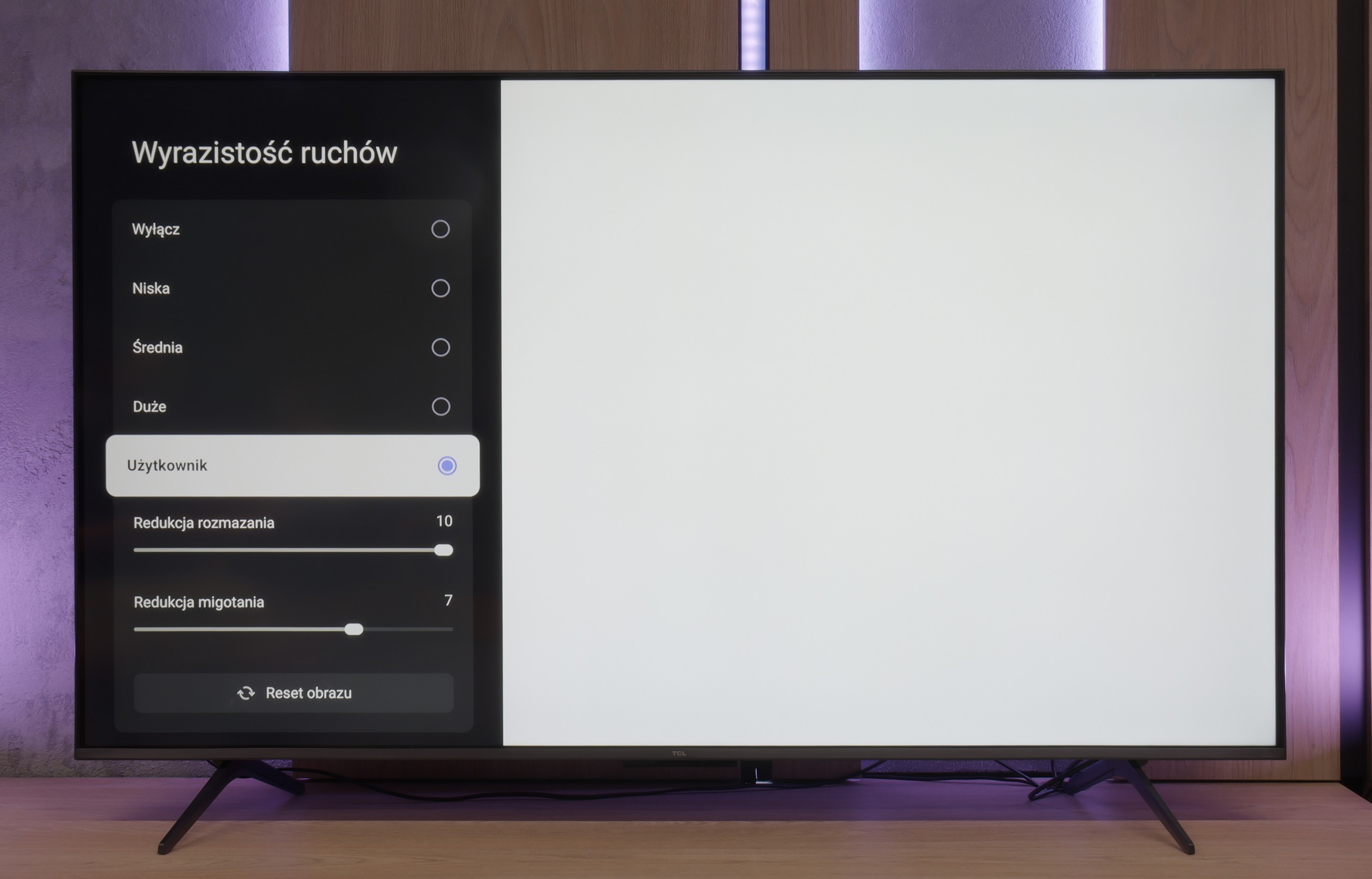

Blur (native resolution, maximum refresh rate):






Blur (BFI function enabled):



Smużenie ():
Smużenie (4K@144Hz):



The TCL C6K utilises a 144 Hz panel, which is a significant advantage in this price range. This is an important step forward compared to the previous model, the C655 PRO, which only offered 60 Hz in 4K. The difference is especially noticeable when watching sports or gaming – the ball, players, or fast action in a game are shown more clearly and without losing details. Interestingly, the panel can also operate at 240 Hz, which the manufacturer does not mention in the official materials. We will return to this topic when discussing the PC gaming mode.
TCL has also added a feature for those watching films: "Motion Clarity", which allows users to adjust the image to their liking using two simple sliders. One can either keep the film frame visible or opt for a very smooth, almost theatrical effect. This way, everyone can find settings tailored to their taste.
The issue of the matrix in the Philips OLED770 is not entirely straightforward. The manufacturer claims a 120 Hz panel, but our measurements showed that the screen can accept a 4K signal even at 144 Hz. That sounds like great news – after all, who wouldn't want an additional mode for PC gamers at this price? However, the reality turned out to be more complex. With 120 Hz content, the television behaves like most OLEDs – the image is absolutely clear, with no trace of ghosting or blurring, making it perfect for both dynamic games and sports broadcasts. The problem only arises at 144 Hz. Unlike models with official support for this frequency, here you can observe the phenomenon known as frame skipping. This means that the television cannot display all the frames – some are skipped, causing motion to lose smoothness, and double contours appear on the screen. The effect resembles the operation of the BFI function, which Philips does not offer in this model anyway.
Console compatibility and gaming features
9.8/10
10/10
- ALLM
- VRR
- VRR range48 - 240Hz40 - 120Hz
- Dolby Vision Game Mode
- Correct implementation of HGIG
- 1080p@120Hz
- 1440p@120Hz
- 4K@120Hz
- Game bar
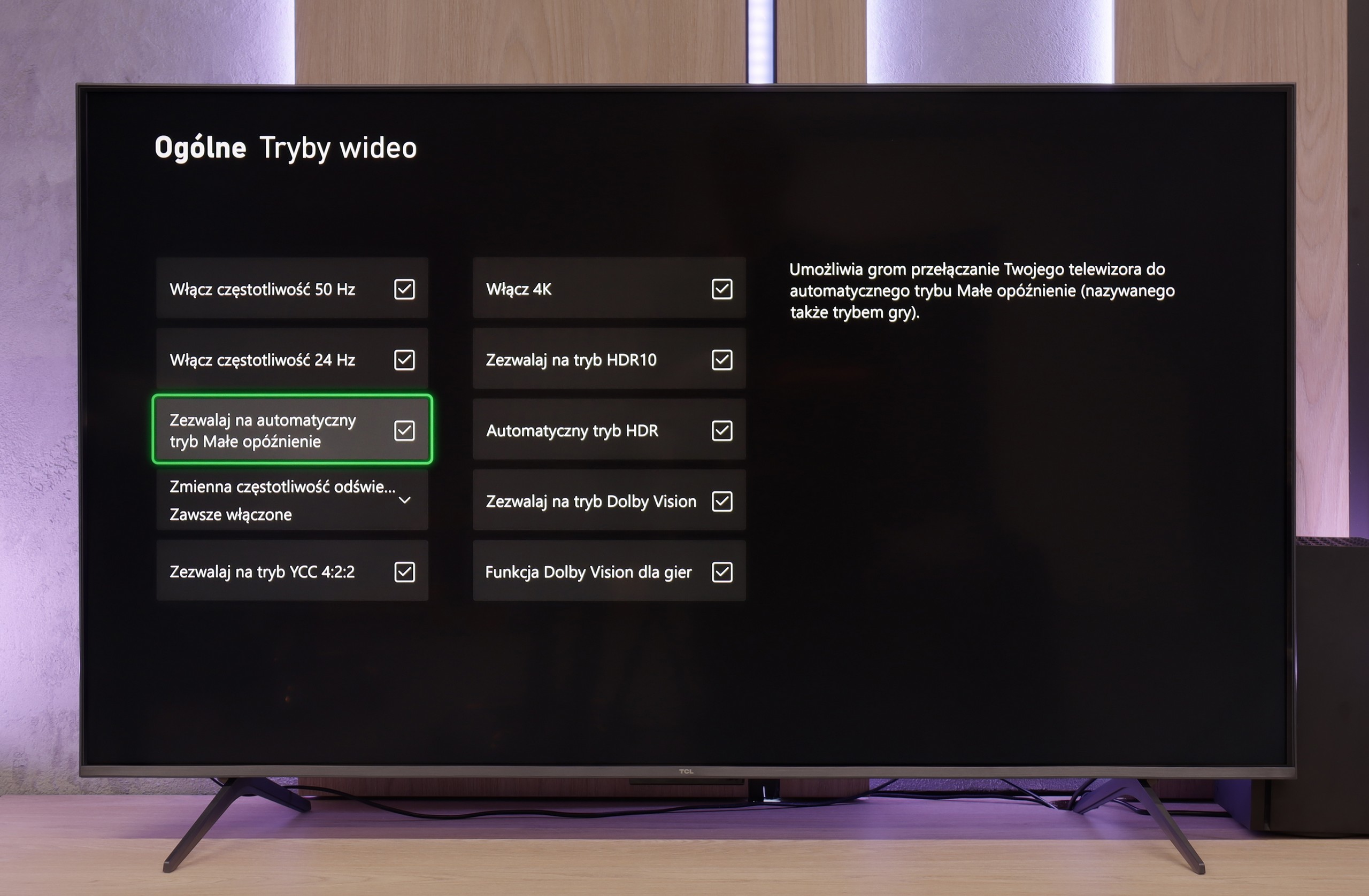

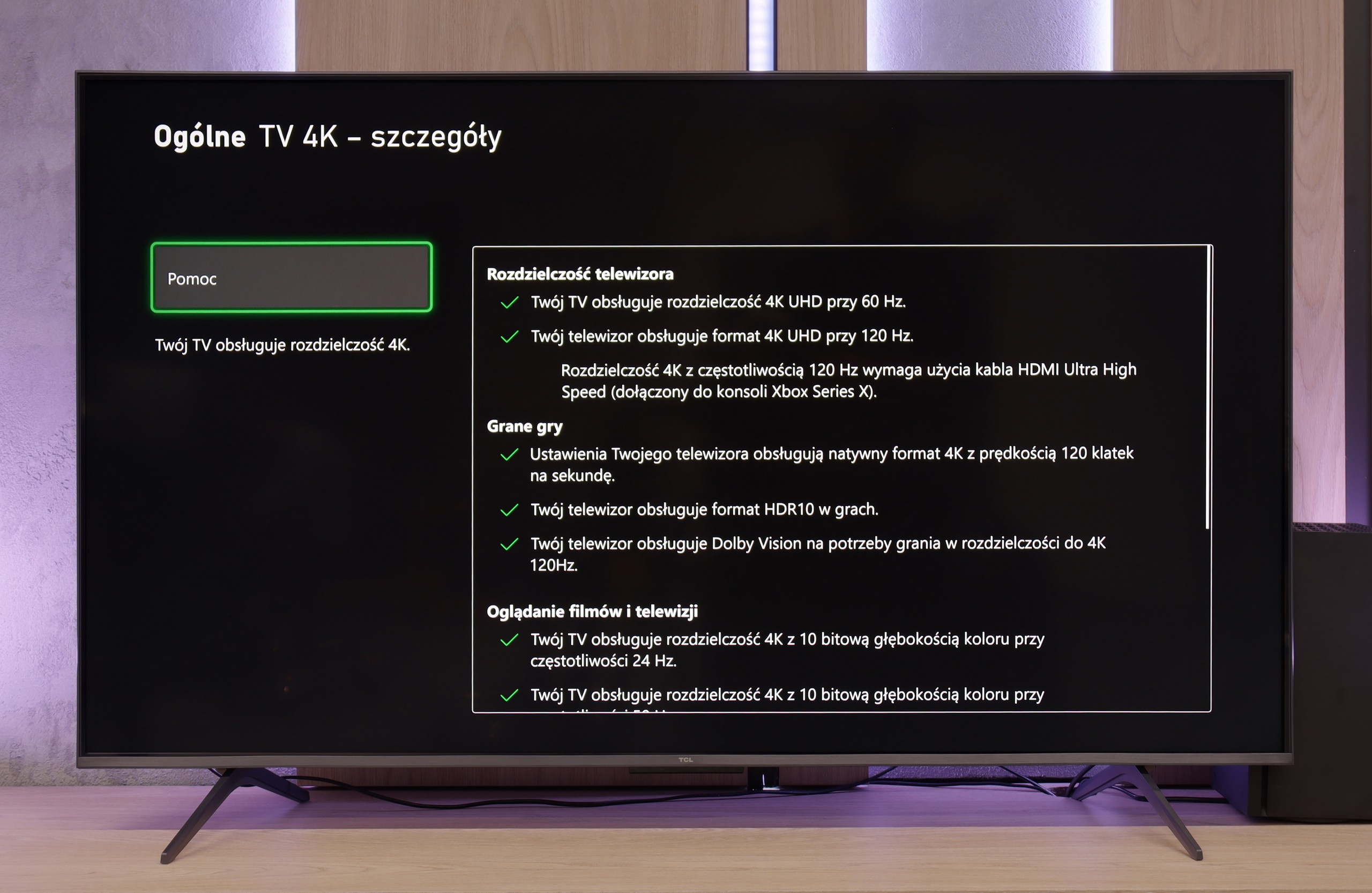

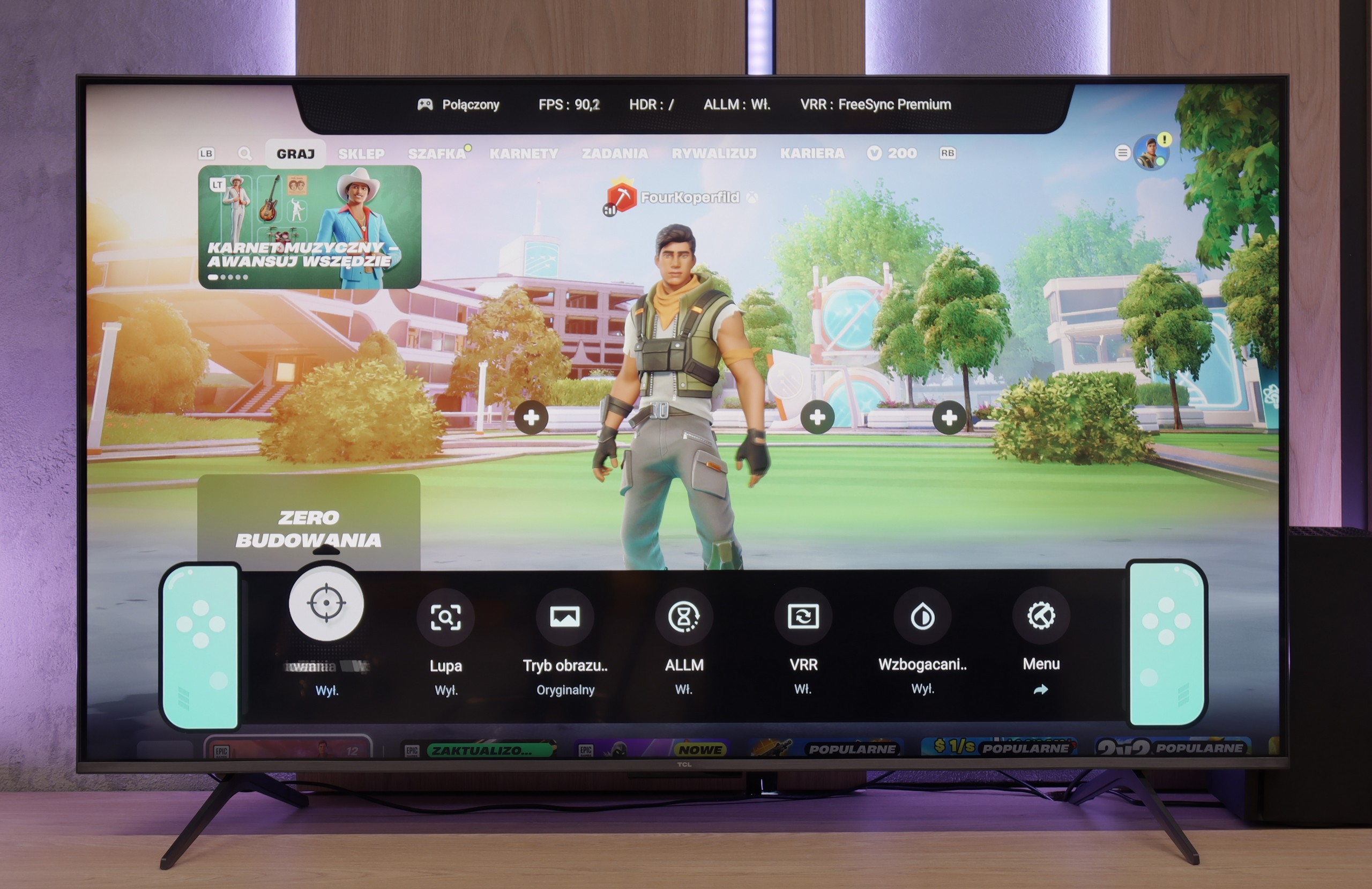

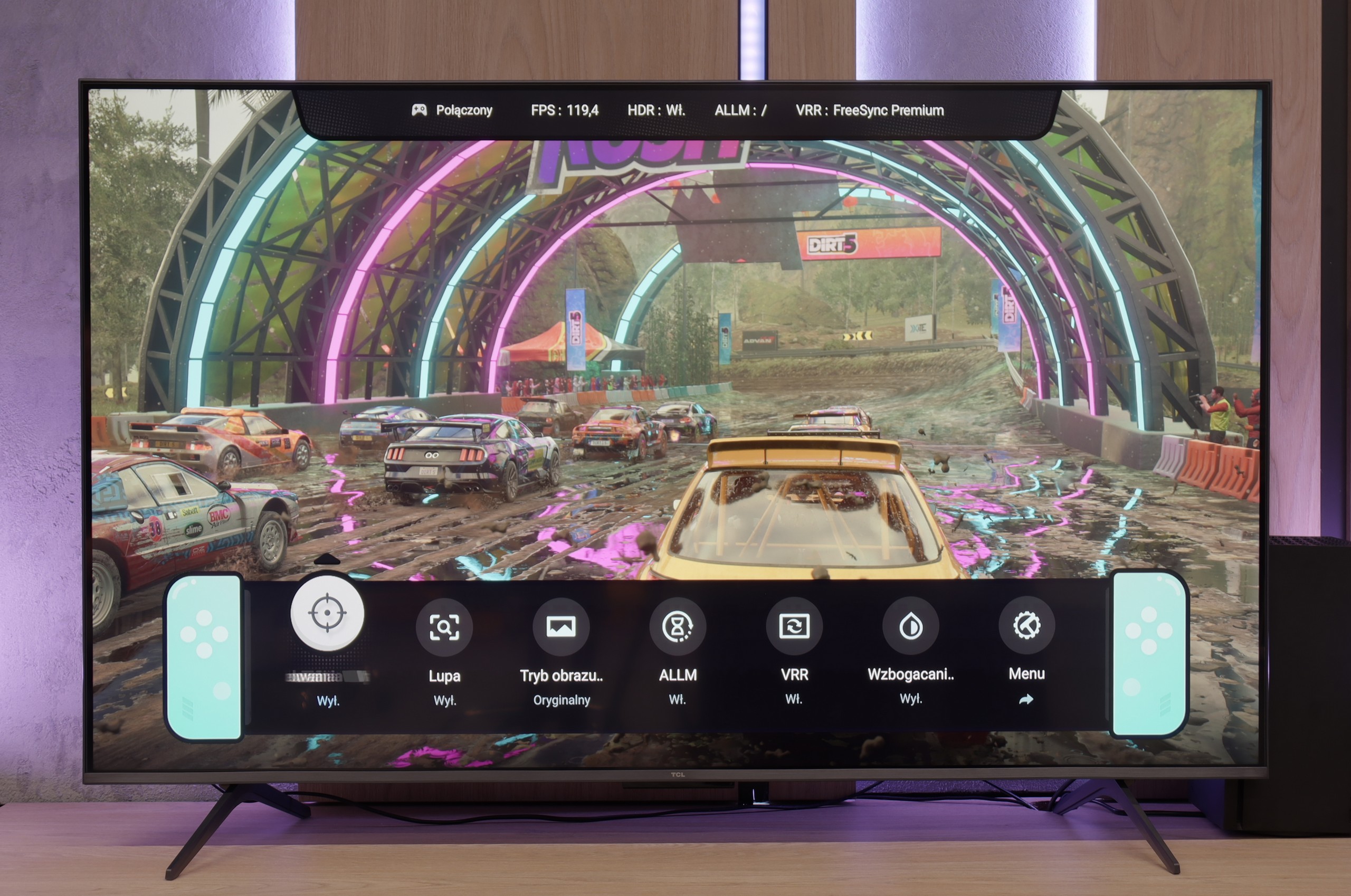

The TCL C6K is a television that can confidently be described as equipment designed with gamers in mind. Here we have 4K at 144 Hz, VRR support, automatic game mode (ALLM), and Dolby Vision Gaming. Additionally, there is a practical Game Bar, which is a panel with the most important settings easily accessible – useful when we want to quickly change something during gameplay (e.g. screen aspect ratio: Yes, it can be done!). The wide range of VRR is also noteworthy, reaching up to 240 Hz. However, this option is primarily for PC gamers who will drop the resolution below native 4K. At that point, the television can spread its wings and demonstrate extra fluidity, especially in fast-paced esports titles. In the case of consoles, we stick to the classic limit of 120 Hz, but the possibilities are still really broad. The only drawback might be slight ghosting, which can sometimes be seen in dynamic scenes. Apart from that, though, the C6K offers everything that gamers expect from a television.
If someone is looking for a television for gaming, the Philips OLED770 is a contender that is hard to ignore. The mere fact that we have an OLED here provides an excellent starting point – perfect black and infinite contrast make evening sessions in atmospheric games look as if they were lifted straight from the cinema. On top of that, there is the Ambilight system, which consists of LEDs on the back of the television that extend the image onto the wall behind the screen. The effect is such that even playing FIFA can look like a small spectacle, and in horror games the atmosphere becomes truly thick. From a technical standpoint, it's also quite decent. The Philips OLED770 supports variable refresh rate (VRR) up to 120 Hz, has an automatic mode for gamers (ALLM), and if someone is using an Xbox Series X, they can also count on Dolby Vision support in games. One must only know that in this mode the input lag is slightly higher than standard, though still at an acceptable level. As a bonus, we get the “Game Bar” panel, which is a special tool bar for gamers. It isn’t the most conveniently designed solution, but it allows you to check key parameters without leaving the game. Overall, this results in a television that, on one hand, has all the essential gaming features, and on the other, can add something unique – Ambilight. And it is this mix of technology and visual effect that makes the OLED770 one of the better screens for gaming at home.
Input lag
9.7/10
9.8/10
SDR
HDR
Dolby Vision
In terms of input lag, the TCL C6K performs exceptionally well. With 120 Hz content, the latency is around 10 ms, and at times even less. This is a level at which the response is practically instantaneous, and it is difficult to find any issues. With 60 Hz materials, the result is around 18 ms – still a very good outcome, entirely sufficient for comfortable gaming.
As we mentioned earlier, the only anomaly that was detected during testing is the Dolby Vision Gaming mode. In this setting, the delay can reach up to 30 ms. This is not particularly impressive, and more demanding gamers may wrinkle their noses, but in practice – during casual sessions – the difference will not be strongly noticeable. Standard HDR10 and SDR modes perform much better. For a 120 Hz signal, input lag drops here to a minimal 5 ms, which is an outstanding result and places the OLED770 among the top televisions suitable for fast-paced gaming. In other words, if someone is not insistent on using Dolby Vision on Xbox, the gaming experience will be quick, smooth, and free of unnecessary delays!
Compatibility with PC
8.6/10
7.6/10
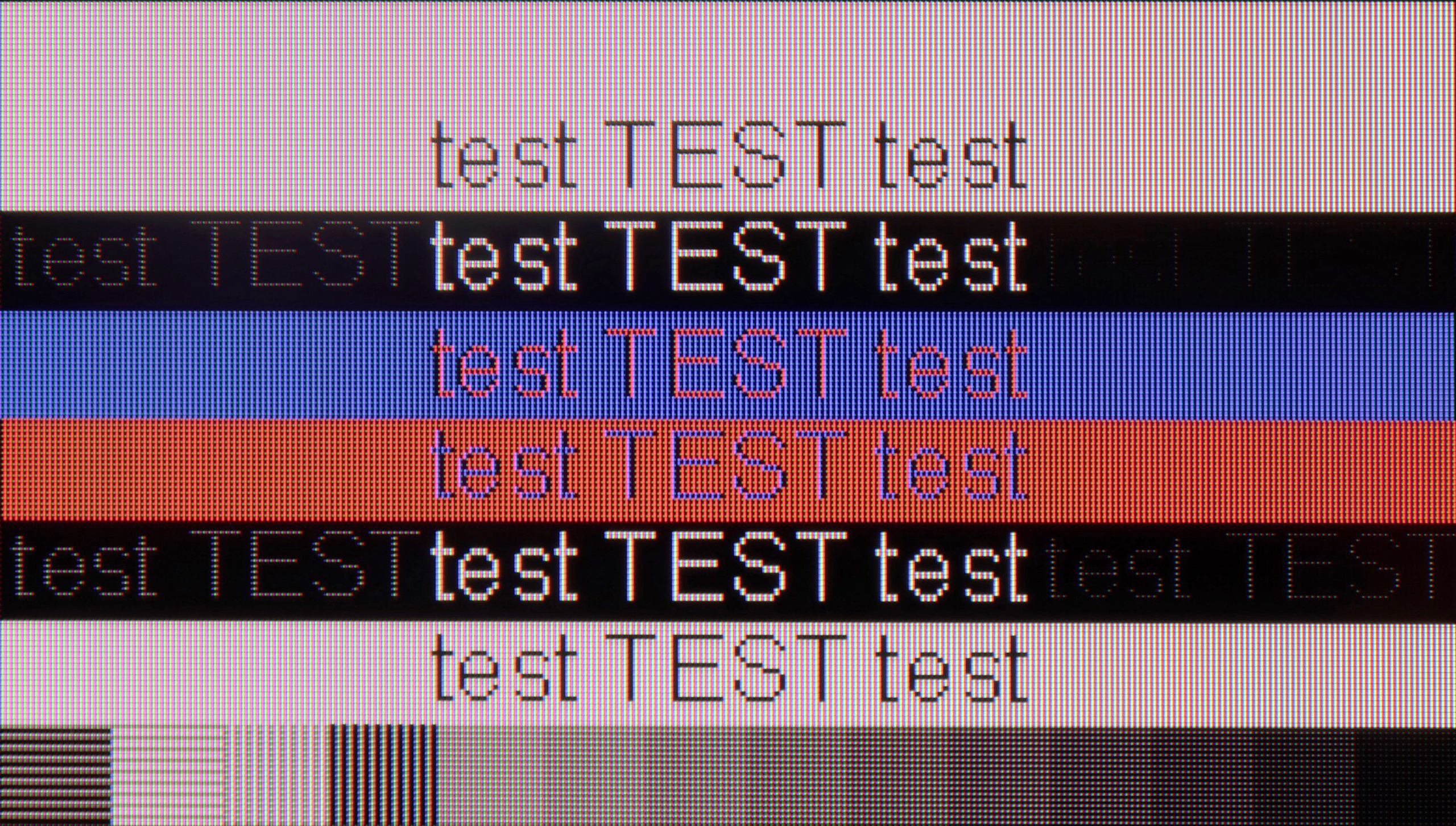

After connecting to the TCL C6K computer, it performs wonderfully. At its native resolution, we have 4K at 144 Hz, and if we lower the resolution, it can even reach 240 Hz. Additionally, the television communicates well with Nvidia and AMD cards – it supports both G-Sync and FreeSync. It's also difficult to criticise for office work. Fonts are sharp and readable thanks to 4:4:4 chroma support, and any minor imperfections are so small that they simply go unnoticed during normal use.
Philips has learned from previous models and has finally improved the implementation of chroma 4:4:4. This is important news for those planning to connect a television to a computer, as it means no issues with sharpness and readability of fonts. Text appears clear and transparent, so the OLED770 can aptly be called an excellent screen for office work or browsing the internet. Of course, very demanding users may notice some imperfections resulting from the WRGB pixel arrangement typical of WOLED panels, but in practice, this does not significantly impact comfort. The television also performs well in games run from a PC. The panel allows for real refresh rates up to 120 Hz, and with low input lag, it delivers a very smooth image without noticeable stuttering. The only missing features are support for G-Sync and – as we have mentioned – a proper 144 Hz mode, but despite this, the overall performance is really solid. For those looking for a versatile screen for both computer and console use, the OLED770 is a choice that is hard to overlook.
Viewing angles
3/10
7.7/10
In the TCL C6K, the viewing angles are typical for a VA panel. Sitting directly in front, the picture looks very good, but any shift to the side results in a noticeable drop in colour saturation and brightness. The difference is particularly evident in colourful scenes – the hues become washed out, and the contrast loses its depth. Compared to IPS panels, this is a clearly weaker performance, although the trade-off is better black levels and higher native contrast – “you win some, you lose some.”
In terms of viewing angles, the Philips OLED770 presents a very high level typical of OLEDs. The image remains clear and vibrant even when viewing the screen from the side – there is virtually no noticeable drop in contrast or colour fading. In this category, it is only surpassed by QD-OLED panels, which can be found either in very expensive premium models or in one exceptional case – the 55-inch Samsung S85F. However, in everyday use, the differences are difficult to detect, and the OLED770 performs nearly perfectly anyway. It is only at truly extreme angles that a slight degradation of colours can be noticed.
TV efficiency during daytime
6.4/10
4.8/10
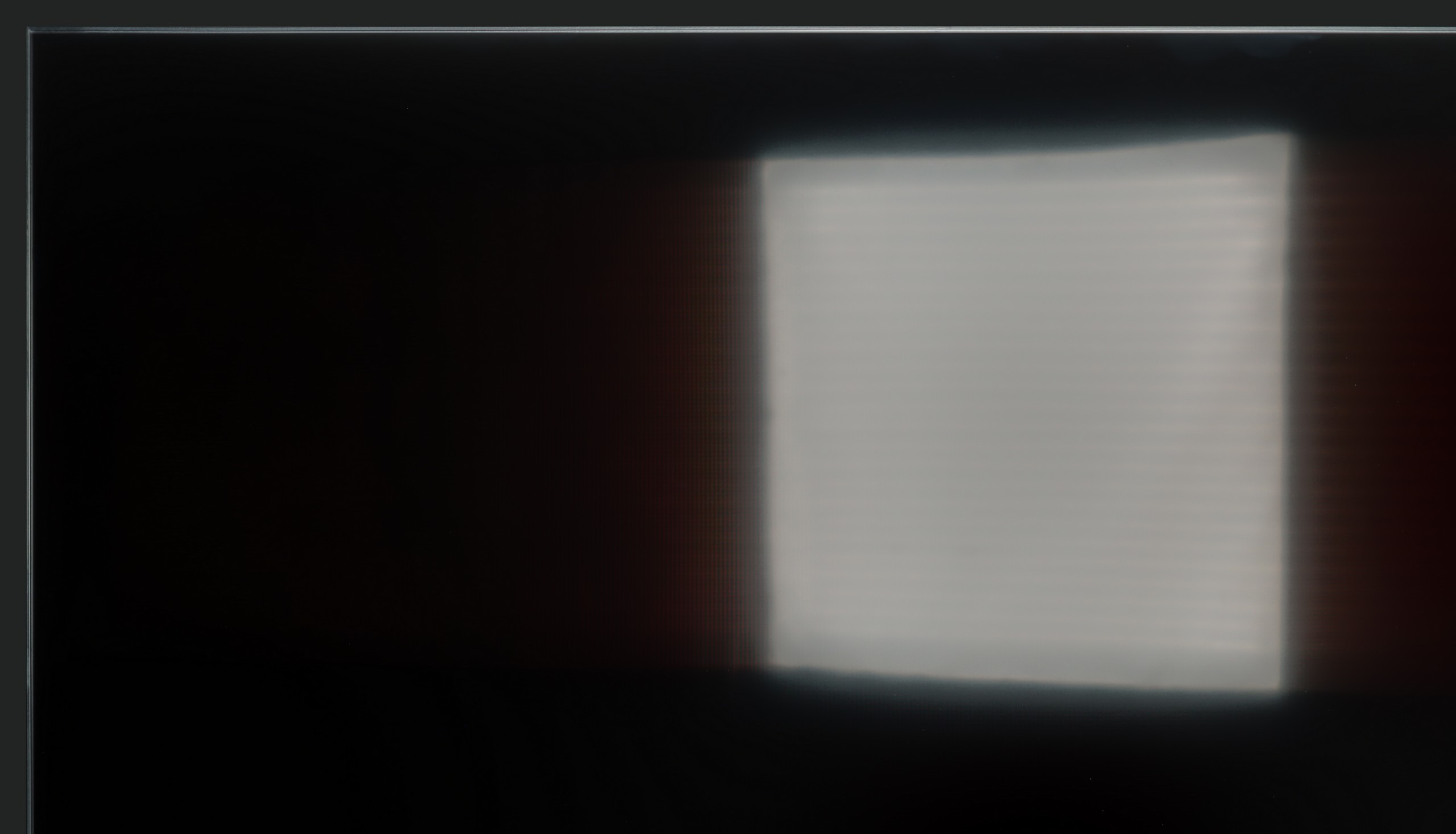



Matrix brightness
Average luminance SDR
Philips OLED770: 249 cd/m2
TCL C6K: 532 cd/m2
TCL C6K performs quite well in bright lighting conditions. The panel offers decent brightness – in SDR content, it reaches around 550 nits, which allows for comfortable television viewing in a moderately lit living room, and even on days with strong light coming through the windows. This means that daytime viewing does not require complete darkening of the room. It's also worth noting that the screen coating does quite a good job of reducing reflections, so the television does not turn into a "mirror" even with strong lighting. However, this is not on the level of top models with more advanced anti-reflective coatings – in very challenging conditions, such as with large glazing, reflections will be noticeable.
OLED770 is not one of the brightest televisions, so it is hard to recommend it for very sunny living rooms. In a bright room, its limitations quickly become apparent – the screen reflects light and acts rather like a slightly dimmed mirror. The suppression of reflections is average, and in direct light, the screen performs poorly. Fortunately, the matrix coating does not distort colours, so even during the day, the hues remain natural, and blacks do not dramatically lose their depth. Nevertheless, it is difficult to say that the OLED770 is a television made for bright spaces – it will definitely perform better in a dimmed living room or a bedroom, where its strong points can fully resonate.
Details about the matrix
Subpixel Structure:
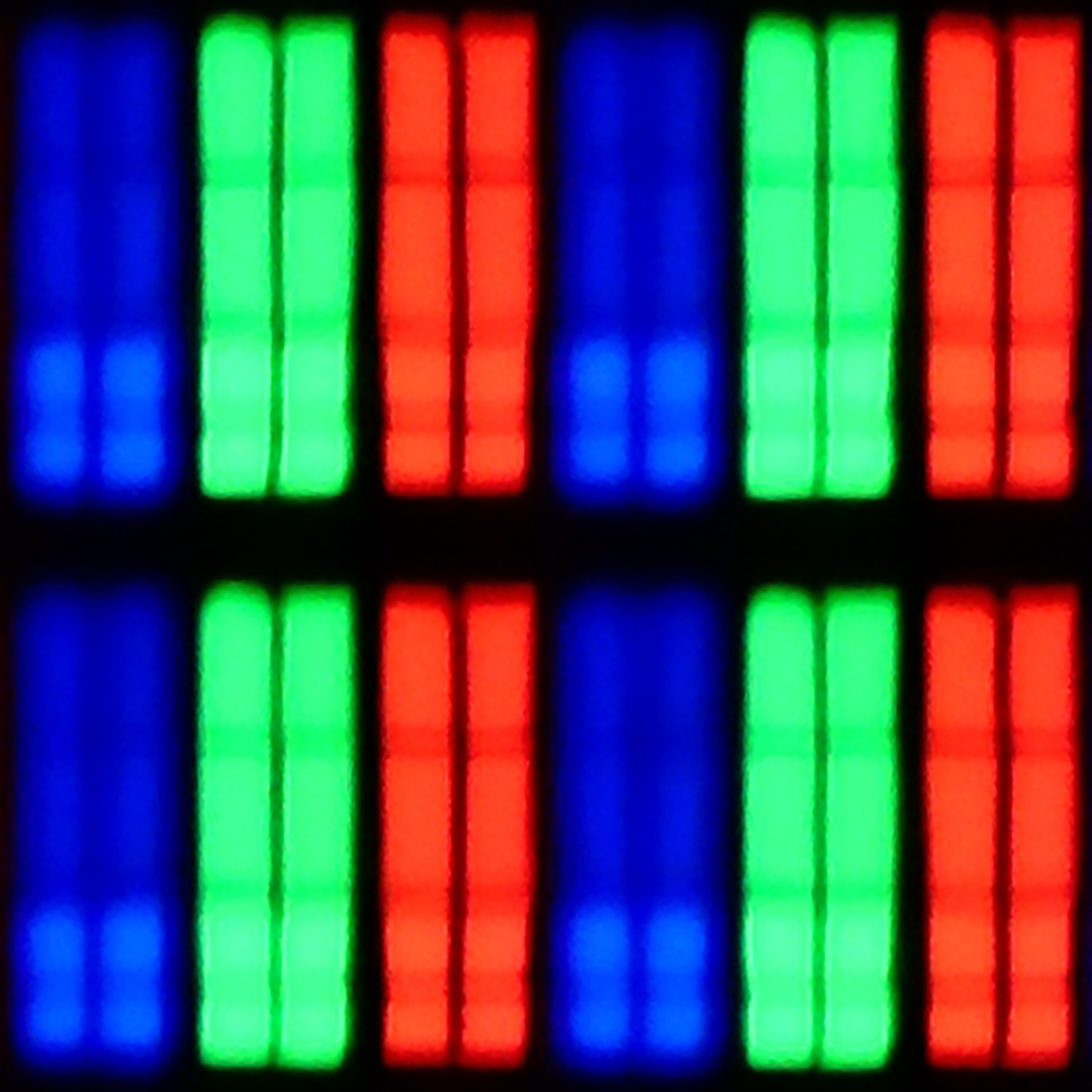

Panel uniformity and thermal imaging:


TCL C6K
Philips OLED770
TV features
7/10
5.5/10
- HDMI inputs2 x HDMI 2.0, 2 x HDMI 2.1 48Gbps0 x HDMI 2.0, 4 x HDMI 2.1 48Gbps
- OutputsToslink (Optical audio), eARC (HDMI), ARC (HDMI)Toslink (Optical audio), eARC (HDMI), ARC (HDMI), Mini-Jack (Headphones)
- Network InterfacesWi-Fi 2.4GHz, Wi-Fi 5GHz, Ethernet (LAN) 100MbpsWi-Fi 2.4GHz, Wi-Fi 5GHz, Ethernet (LAN) 100Mbps
- TV receptionDVB-T, DVB-T2, DVB-S, DVB-S2, DVB-CDVB-T, DVB-T2, DVB-S, DVB-S2, DVB-C
Classic features:
- Recording to USB (terrestrial TV)
- Recording programming
- Picture in Picture (PiP)
- RF remote control (no need to aim at the screen)
- Backlit remote control
- Teletext
- Audio only mode
- Bluetooth headphones support
- Simultaneous Bluetooth headphones & TV audio
Smart features:
- AirPlay
- Screen mirroring (Windows Miracast)
- Voice search
- Voice search in native language
- Ability to connect a keyboard and mouse
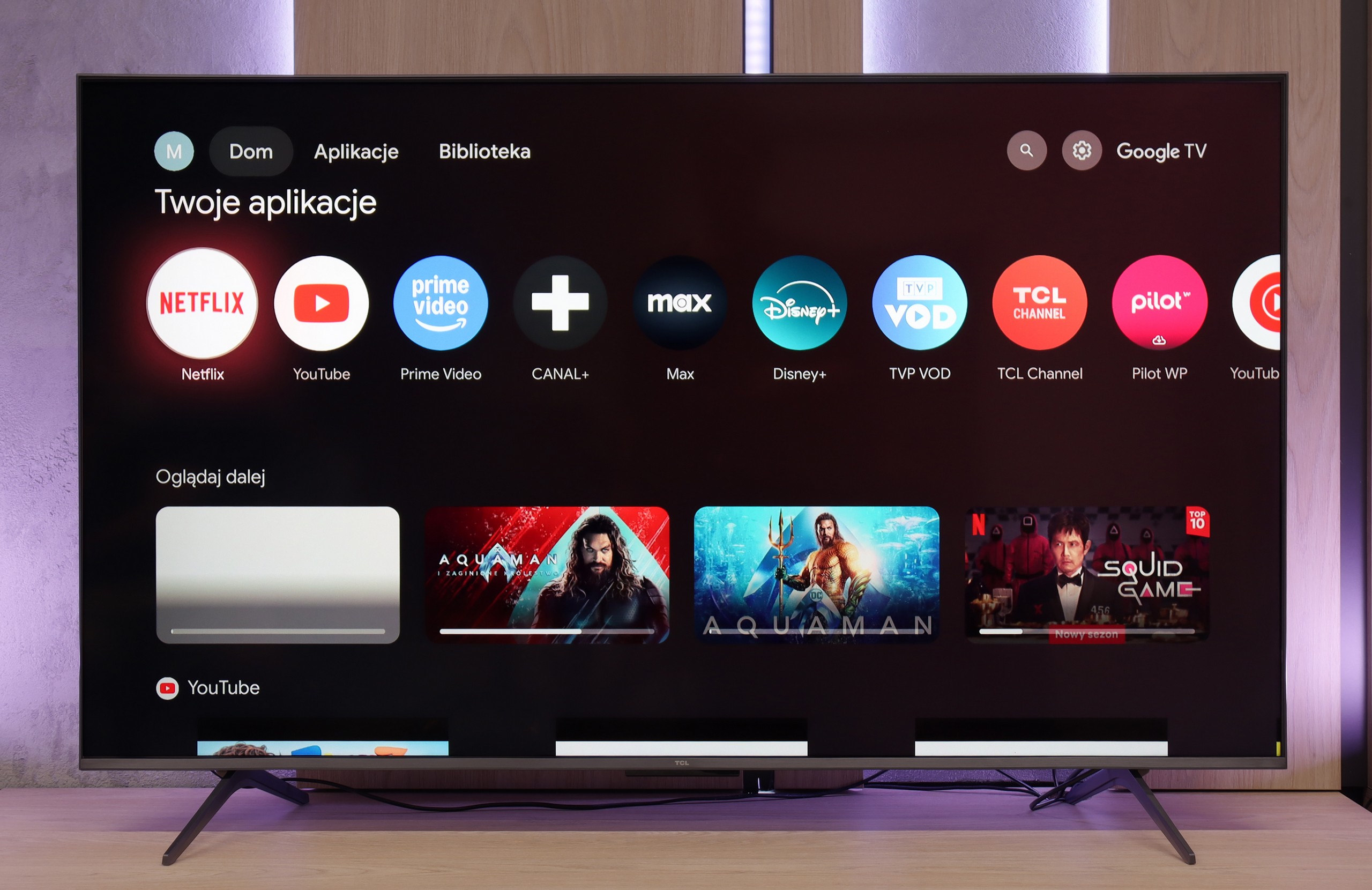
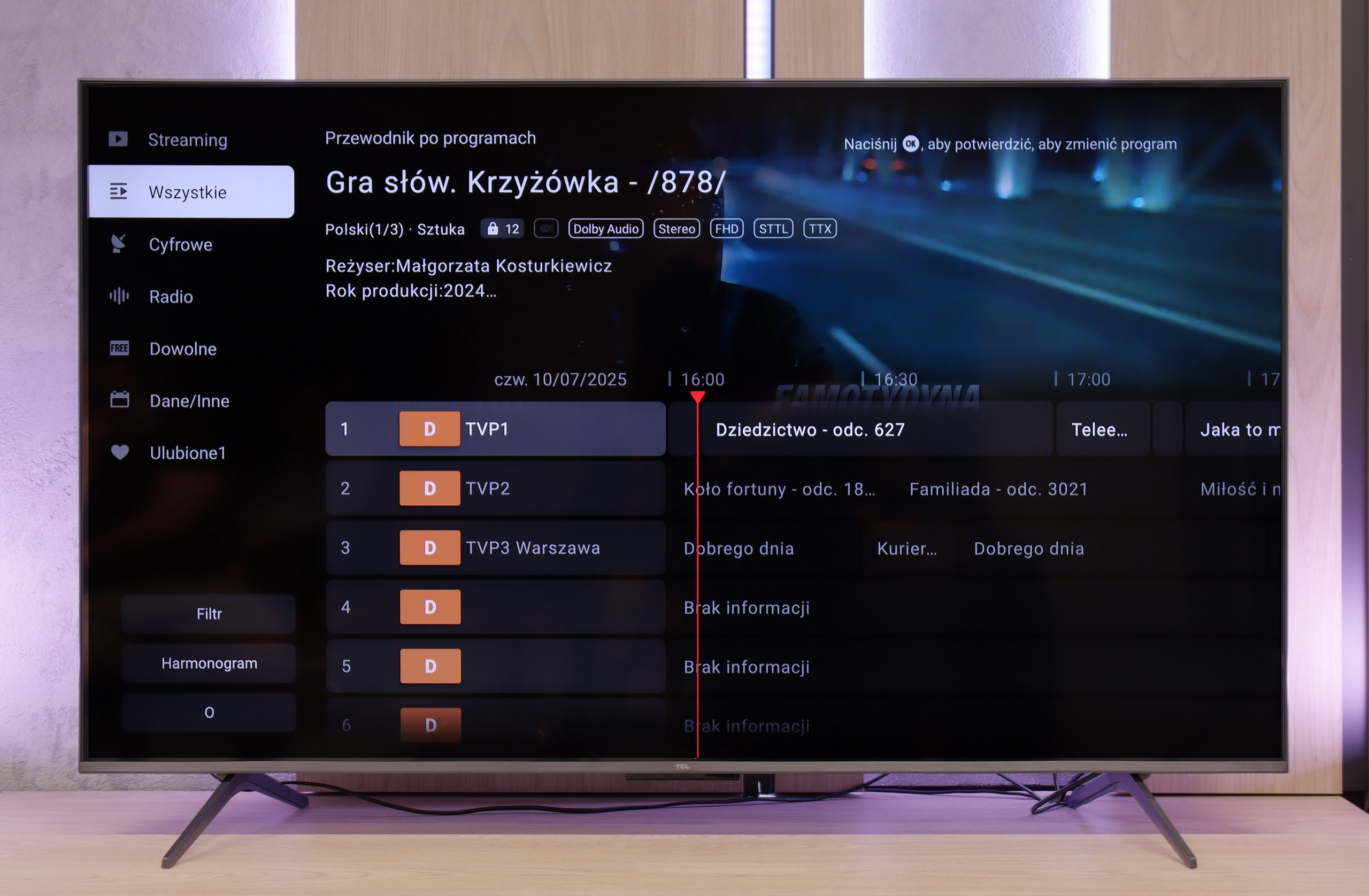
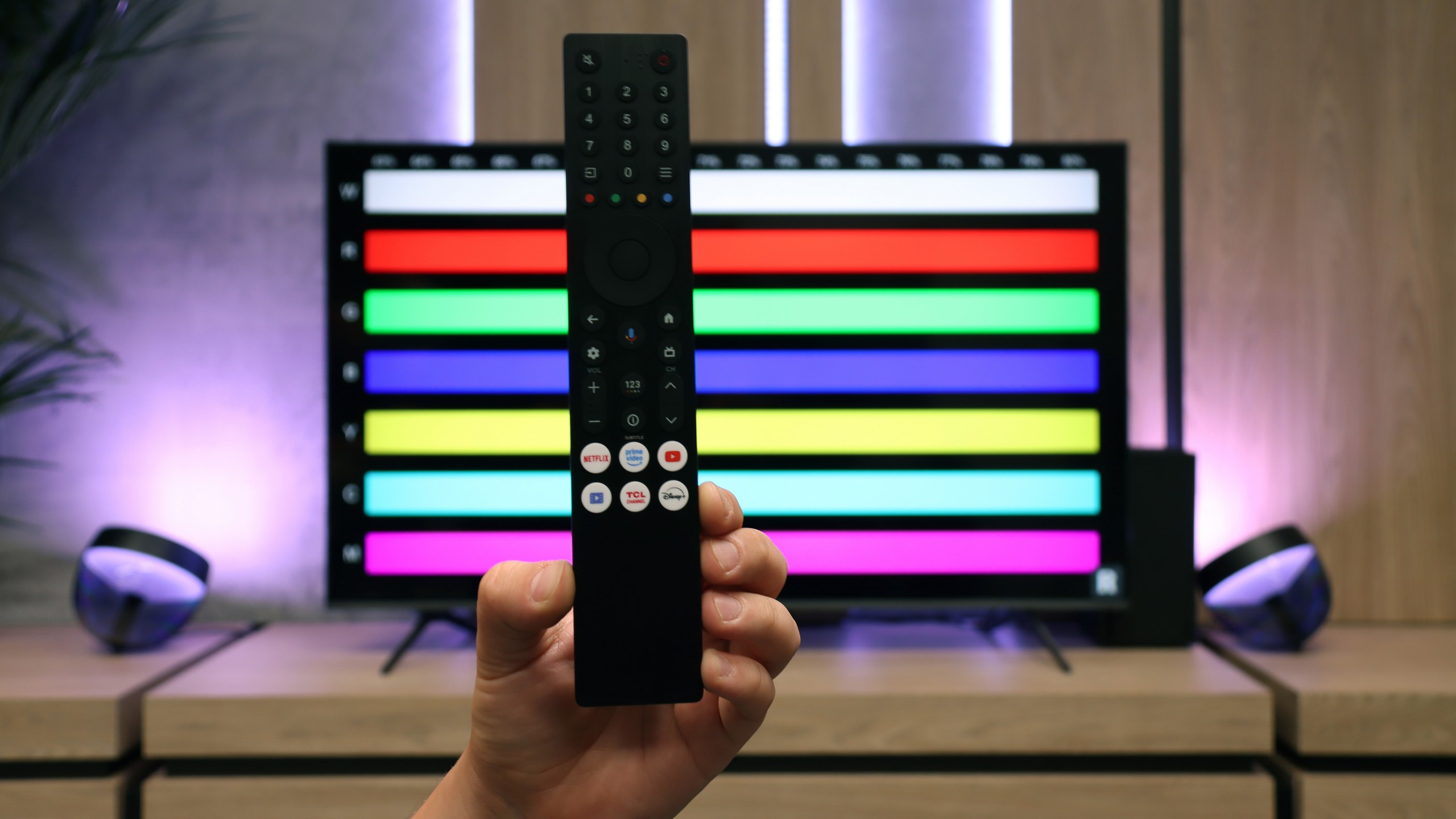
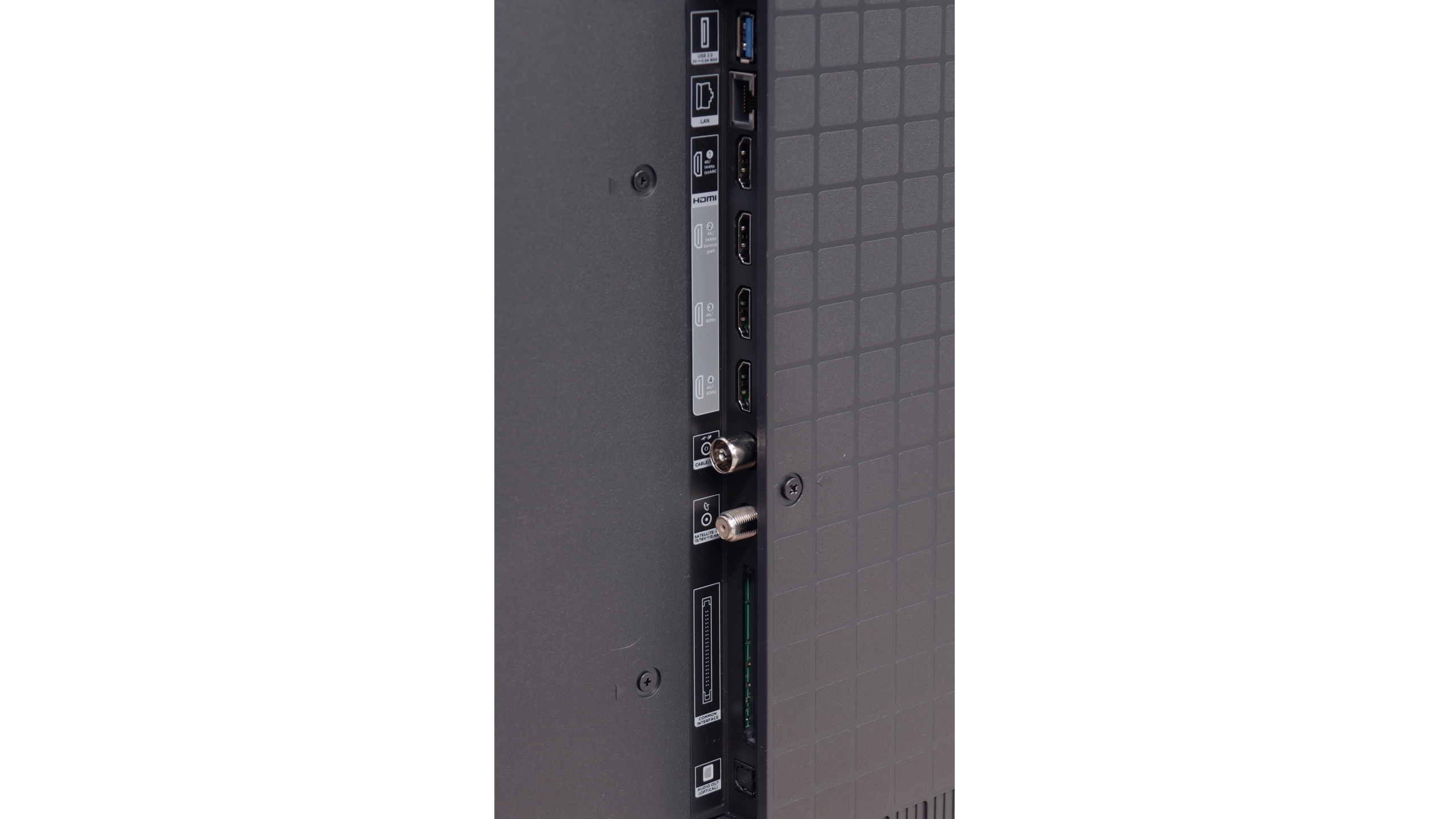




Multimedia Features: Google TV
The strongest aspect of the TCL C6K is undoubtedly the Google TV system. It gives the television character and provides an edge over many competitors. We have a full package of services here – from support for popular streaming apps, to screen mirroring support, and even AirPlay, allowing iPhone users to feel right at home. Additionally, it features Google Assistant (recently with the Gemini AI version), which not only answers questions but also efficiently executes simple commands, such as changing channels or searching for content on VOD services. The system operates quite responsively, although one must mention a certain drawback – the awkward translations in the Polish menu can elicit a smile but sometimes require a moment of reflection to decipher what is actually meant.
Classic Features
When it comes to classic television functions, the TCL C6K performs rather average. There is no USB recording or PiP mode, which may be disappointing for some. However, the manufacturer has not forgotten the basics – teletext television and a clear EPG are available, which still matter to some users. In everyday use, the Bluetooth support for external audio devices is also handy – a simple way to connect a speaker or headphones, which can be a practical solution for seniors. Besides that, it is hard to find elements here that would distinguish the C6K from its competitors – it is simply a solid, but standard package of basic functions.
User Functions
Let’s start with the basics, namely the classic functions of a television. The Philips OLED770 doesn’t rock the boat here; it has a standard EPG interface, the ability to connect devices via Bluetooth, and a few simple configuration options, including teletext. A curiosity is the presence of a jack connection, which has become quite rare these days. However, it will be appreciated by owners of older amplifiers or wired headphones. The remote control gives a good impression—it's ergonomic and has backlighting for the numeric keypad—but here too, there is a sense of a step back. It operates on infrared, so you have to aim at the television, and we would expect full wireless support by 2025. The exception is voice commands that use Bluetooth, but even here there is no cause for euphoria.
SmartTV Features – TitanOS
Speaking of voice, let’s move on to the Smart TV system, which largely defines the daily comfort of using a television today. Here, the OLED770 clearly falls behind the competition. TitanOS operates quickly enough that it’s hard to call it a disaster, but everyday use can be frustrating due to minor errors and shortcomings. Theoretically, we get support for AirPlay, but on the other hand, screen mirroring didn’t work at all in practice. Voice search? Yes, but only through Amazon Alexa and without support for the Polish language. In other words, the features exist, but when we try to use them, their utility turns out to be severely limited, even useless. And it is the Smart TV aspect that becomes the biggest hindrance for the OLED770. The picture can be breathtaking, gaming performs excellently, and Ambilight creates a unique atmosphere—yet when we move to everyday use of applications and services, we feel a sense of dissatisfaction.
Ambilight – Philips OLED770
While in terms of smart functionality, the Philips OLED770 is rather average, it has something in store that the competition genuinely envies. We are of course talking about the three-sided Ambilight system, which has been a hallmark of televisions from this brand for years. The LED lights positioned at the back of the casing dynamically illuminate the wall in colours matching what is currently happening on the screen. The effect is simple but very suggestive—the image seems to extend beyond the confines of the television, giving us the impression that the screen has suddenly grown by extra inches. During a film viewing, it can create an atmosphere, in games it enhances immersion, and during everyday television watching, it simply pleases the eye. It is this addition that makes, despite the limitations of TitanOS, the OLED770 have something that can attract attention and give it character.
Playing files from USB
8.9/10
8.5/10
Supported photo formats:
Maximum photo resolution:
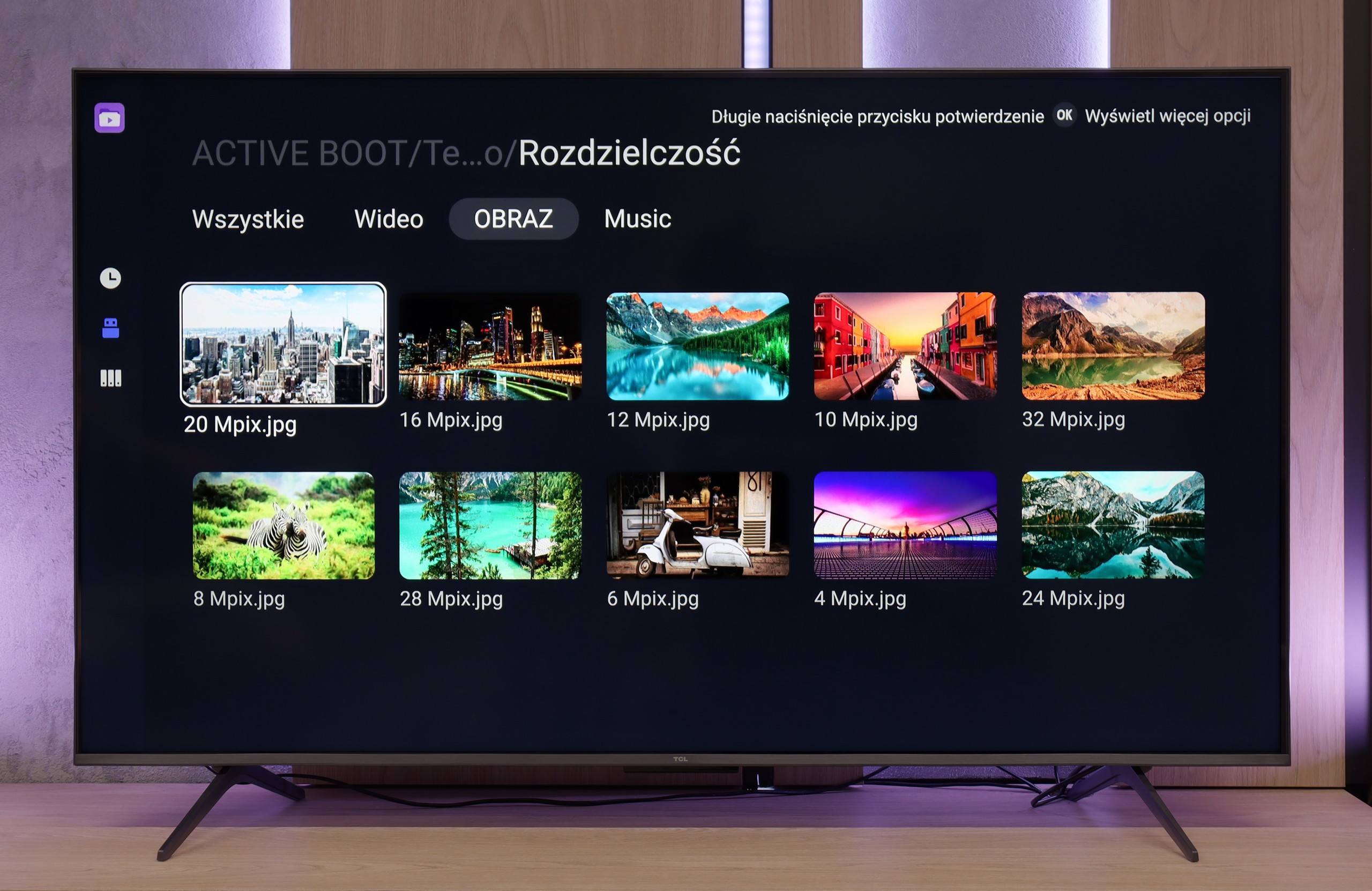

The built-in media player in the TCL C6K performs really well - almost all popular file formats work without significant issues. There are indeed minor exceptions, particularly with less common codecs or unconventional video file configurations, but in everyday use, this is rarely noticeable. The biggest advantage, however, is that the television runs on Google TV, which provides complete freedom in choosing additional software. If someone encounters a file that the standard player cannot handle, it's enough to install an alternative - such as VLC - and the problem disappears.
The built-in media player in the Philips OLED770 works quite well, especially when it comes to subtitles – practically every format we tried was handled correctly, which will certainly please those watching films from their own library. However, there are some reservations regarding photo support. Not all resolutions are recognised, which may surprise users accustomed to viewing photographs from classic cameras or older memory cards. Other than that, everything works properly – it’s just worth ensuring that the television can manage the files we actually want to play on it.
Apps
9.6/10
6.7/10














































Sound
6.5/10
7/10
- Maximum volume-80dB
- Dolby Digital Plus 7.1
- Dolby True HD 7.1
- Dolby Atmos in Dolby Digital Plus (JOC)
- Dolby Atmos in Dolby True HD
- DTS:X in DTS-HD MA
- DTS-HD Master Audio
In terms of audio, the TCL C6K performs quite well. The manufacturer has been boasting about its collaboration with the Onkyo brand for several years, and it indeed translates into sound quality. The sound is pleasant, with clear mid-tones and a fairly crisp top end, and overall it feels well-balanced. Of course, it can't replace a full-fledged soundbar, especially in terms of bass depth, but as far as built-in speakers in a television in this price segment go – it's really very good.
In terms of sound, the Philips OLED770 performs quite well, although one shouldn’t expect strong bass. For regular television watching, streaming services, or series, its capabilities are fully sufficient – dialogues are clear, and the overall tonal balance is at a decent level. However, when we want to feel a real impact in cinematic productions or games, it quickly becomes apparent that there is a lack of solid low-end frequencies. In such a situation, a natural complement is an additional soundbar or audio system that allows you to make the most of the excellent picture.
On the plus side, versatility in handling formats is noteworthy. The OLED770 handles practically all popular codecs, including Dolby Atmos, DTS:X, and Dolby TrueHD. This means that when connecting external audio equipment, you can expect a full audio experience, even if the built-in speakers in the television do not create a spectacular impression.
Acoustic Measurements
No acoustic data
80dBC (Max)
75dBC


